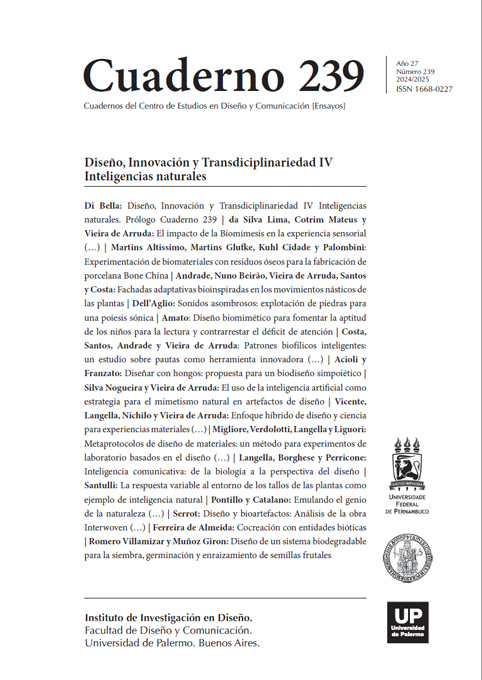Smart biophilic patterns: a study on guidelines as an innovative tool for the renovation of internal environments of social housing
Resumo
Estudos sobre padrões biofílicos surgem como uma ferramenta essencial e contínua para melhorar as conexões entre a natureza, a biologia humana e a interação do usuário em ambientes construídos.
Referências
Alexander, C. (1979) The Timeless Way of Building: Oxford University Press.
Alexander, C. Ishikawa, S. Silverstein, M. (1977) A Pattern Language: Towns, Buildings,
Construction: OUP USA.
Kellert, S.R. Finnegan, S. (2011) Biophilic Design: The Theory, Science, And Practice of
Bringing Buildings To Life (Abrangente E, Prática De Como Integrar A Natureza NoDesign De).
Laurel, B. (1991) Computers as Theatre: Addison-Wesley Pub.
Lidwell, C. W. Holden, k. Butler. J. (2003) Universal Principles of Design: Rockport Publishers.
Maslow, A. H. (1975). A Theory of Human Motivation. in: Balcão, Y.; Lamb, l. l. (org.). Human
Behavior in the Company (pp. 337-366). Rio de janeiro: FGV.
Maslow, A.H. (1943) A Theory of Human Motivation. Editied by Sheldon S. Brown: North
Shore Community College.
Norman, D. A. (1998) The Invisible Computer: Mit Press.
Simon, H. A. (1969) The Sciences of the Artificial: M.I.T. Press.
Terry W. Fernando. F (1986) Understanding Computers and Cognition: A New Foundation
for Design First. Ablex Publishing Corporation.
Wilson, E.O. (1984) Biophilia: The Human Bond With Other Species. Cambridge, Massachusetts: Harvard University Press.
Winograd, T. (1986) Understanding Computers And Cognition: A New Foundation For
Design: In addition to the authors mentioned, others will be consulted during the research
to broaden and deepen the understanding of the topic addressed.
Los autores/as que publiquen en esta revista ceden los derechos de autor y de publicación a "Cuadernos del Centro de Estudios de Diseño y Comunicación", Aceptando el registro de su trabajo bajo una licencia de atribución de Creative Commons, que permite a terceros utilizar lo publicado siempre que de el crédito pertinente a los autores y a esta revista.


